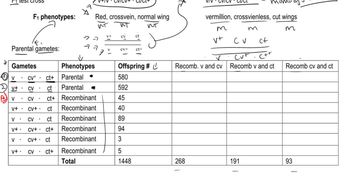The Age of Genetics was created by remarkable advances in the use of biotechnology to manipulate plant and animal genomes. Given that the world population reached 7.5 billion people in 2017 and is expected to reach 9.7 billion in 2050, some scientists have proposed that only the worldwide introduction of genetically modified (GM) foods will increase crop yields enough to meet future nutritional demands. Pest resistance, herbicide, cold, drought, and salinity tolerance, along with increased nutrition, are seen as positive attributes of GM foods. However, others caution that unintended harm to other organisms, reduced effectiveness to pesticides, gene transfer to nontarget species, allergenicity, and as yet unknown effects on human health are potential concerns regarding GM foods. If you were in a position to control the introduction of a GM primary food product (rice, for example), what criteria would you establish before allowing such introduction?
Table of contents
- 1. Introduction to Genetics51m
- 2. Mendel's Laws of Inheritance3h 37m
- 3. Extensions to Mendelian Inheritance2h 41m
- 4. Genetic Mapping and Linkage2h 28m
- 5. Genetics of Bacteria and Viruses1h 21m
- 6. Chromosomal Variation1h 48m
- 7. DNA and Chromosome Structure56m
- 8. DNA Replication1h 10m
- 9. Mitosis and Meiosis1h 34m
- 10. Transcription1h 0m
- 11. Translation58m
- 12. Gene Regulation in Prokaryotes1h 19m
- 13. Gene Regulation in Eukaryotes44m
- 14. Genetic Control of Development44m
- 15. Genomes and Genomics1h 50m
- 16. Transposable Elements47m
- 17. Mutation, Repair, and Recombination1h 6m
- 18. Molecular Genetic Tools19m
- 19. Cancer Genetics29m
- 20. Quantitative Genetics1h 26m
- 21. Population Genetics50m
- 22. Evolutionary Genetics29m
18. Molecular Genetic Tools
Genetic Cloning
Problem 19a
Textbook Question
We designed a screen to identify conditional mutants of S. cerevisiae in which the secretory system was defective. Suppose we were successful in identifying 12 mutants.
Describe the crosses you would perform to determine the number of different genes represented by the 12 mutations.
 Verified step by step guidance
Verified step by step guidance1
Step 1: Begin by crossing each of the 12 mutants with a wild-type strain of S. cerevisiae. This will ensure that the mutations are recessive and can be analyzed in subsequent steps. Observe the phenotypes of the resulting diploid strains to confirm that the secretory defect is recessive.
Step 2: Perform pairwise crosses between the 12 mutant strains to create diploid strains. For each cross, observe whether the diploid strain exhibits the mutant phenotype or the wild-type phenotype.
Step 3: Apply the concept of complementation testing. If two mutants complement each other (i.e., the diploid strain exhibits the wild-type phenotype), it indicates that the mutations are in different genes. If the diploid strain exhibits the mutant phenotype, the mutations are likely in the same gene.
Step 4: Organize the results of the complementation tests into groups based on which mutants complement each other. Each group represents a distinct gene involved in the secretory system.
Step 5: Count the number of groups formed from the complementation tests. This number represents the total number of different genes represented by the 12 mutations.
 Verified video answer for a similar problem:
Verified video answer for a similar problem:This video solution was recommended by our tutors as helpful for the problem above
Video duration:
2mPlay a video:
Was this helpful?
Key Concepts
Here are the essential concepts you must grasp in order to answer the question correctly.
Mutant Analysis
Mutant analysis involves studying organisms with specific mutations to understand gene function. In this context, identifying conditional mutants of S. cerevisiae helps researchers determine how these mutations affect the secretory system. By analyzing the phenotypes of these mutants, scientists can infer the roles of the affected genes.
Recommended video:
Guided course

Chi Square Analysis
Genetic Crosses
Genetic crosses are experimental breeding techniques used to study inheritance patterns and gene interactions. To determine the number of different genes represented by the 12 mutations, one would perform crosses between the mutants and analyze the offspring's phenotypes. This helps in identifying whether the mutations are in the same gene or in different genes.
Recommended video:
Guided course

Trihybrid Cross
Complementation Testing
Complementation testing is a method used to determine if two mutations that produce similar phenotypes are in the same gene or in different genes. By crossing two mutants and observing the phenotype of the offspring, researchers can assess whether the mutations complement each other (indicating different genes) or fail to complement (indicating the same gene). This is crucial for understanding the genetic basis of the identified mutants.
Recommended video:
Guided course

Complementation
Related Videos
Related Practice
Textbook Question
562
views


